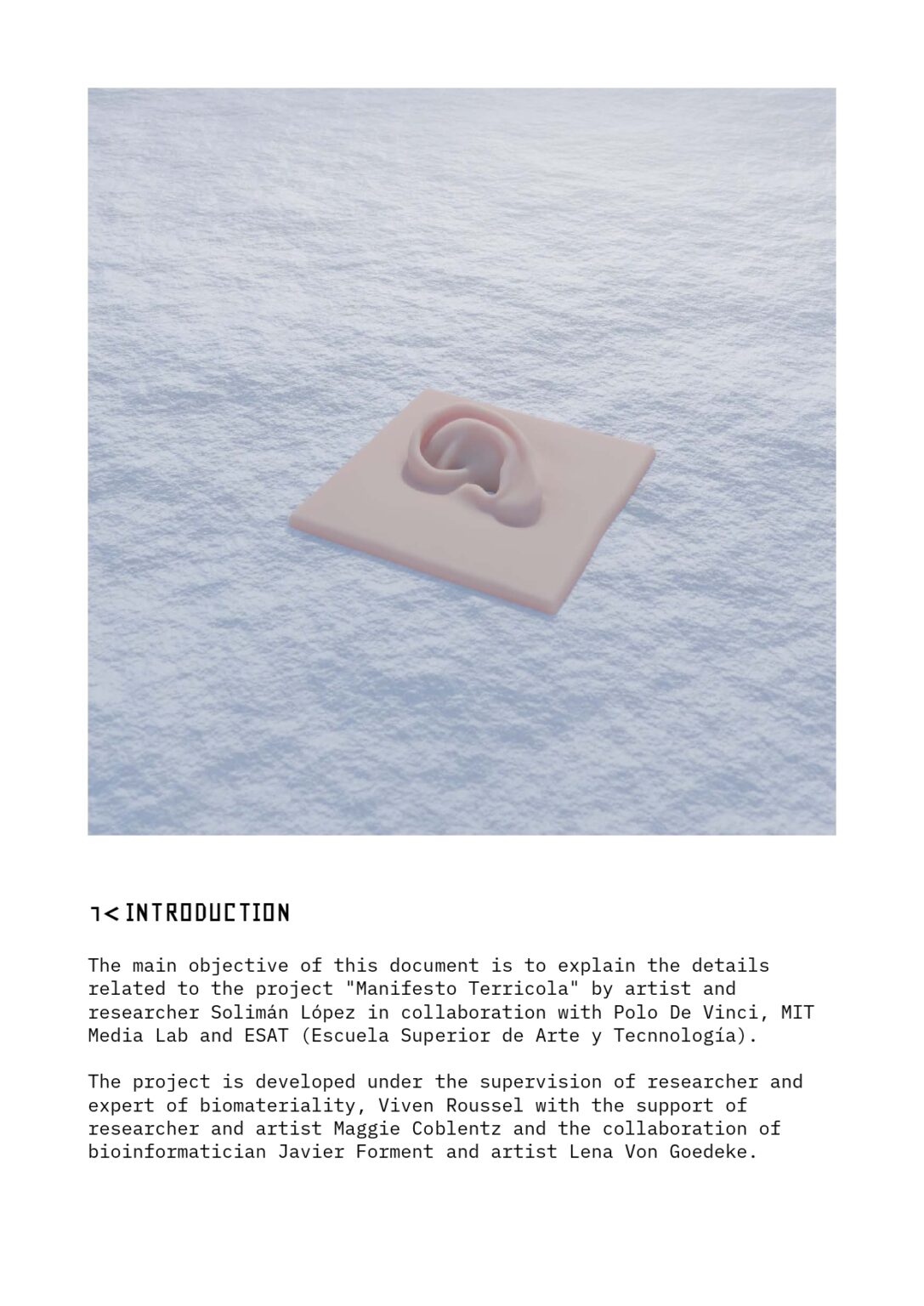- Home
- /
- Hyphen Hub Salon Series 2023: Manifiesto Terrícola with artist Solimán López in conversation with artist Janet Biggs

When: Monday 10 April 2023
Time: Doors open at 6:00pm
Salon: 6:30-8:00pm
Location: Chelsea NYC
In this salon, we featured new media artist Solimán López (born in Spain/lives in France) to engage in an exciting dialogue about his upcoming new work “Manifesto Terrícola”
“Manifesto Terrícola” is a scientific-artistic project produced in collaboration with Washington University. The project speaks to the need to return to being in sync with our environment through the symbiosis and acceptance of the union between science, biology, technology, and art. Solimán also offers us a glimpse into the future by suggesting the use of glaciers as enormous hard drives for digital information encoded in DNA. This project is produced with the support of the De Vinci Innovation Center, Paris.
Solimán López has had a long and distinguished career exploring the intersection of art, science, biotechnology, digital communities, and ecology. His work delves into the potential of a hyper-connected future by combining biology and digital technologies. He employs various innovative technologies, including blockchain, DNA storage, bioprinting, and 3D printing, to push the boundaries of artistic expression.
Throughout his career, López has collaborated with renowned institutions and research organizations focused on longevity, such as the Foresight Institute and the Sens Research Foundation. He has also worked with key players in DNA storage, including GenScript and Twist Bioscience. Additionally, he has engaged with prominent innovation centers such as the De Vinci Innovation Center in Paris, Google Campus Madrid, and the University of Washington, among others.
López’s accomplishments include the creation of the first digital museum stored on a hard disk, which was later transferred to DNA for preservation. He has also established a biobank stored in bacteria within olive oil, achieved through the DNA encoding of a smart contract. Notably, his latest project involves inserting a bio-printed collagen ear, encapsulating the text of his “Manifesto Terricola,” into a glacier in the Arctic. This project serves as a profound reflection on the future of humanity and our digital legacy.
During the Salon, López discussed the role of art in driving value for human communities and preserving our planet, or conceiving a new one if ours becomes uninhabitable. He delved into his various projects, including the Harddiskmuseum, OLEA, and Introns. However, he placed particular emphasis on his newest endeavor, the “Manifesto Terricola.” As he embarked on his journey to install it in the Svalbard archipelago in the Arctic, he aimed to metaphorically reestablish a connection with our planet’s frequency and explore the possibility of storing our digital history within this vital environment for the future of humanity.
About Janet Biggs (moderator of the evening):
Janet Biggs is a research-based, interdisciplinary artist known for immersive work in video, film, and performance. Biggs navigates the territory between art, science, and technology, focusing on individuals in extreme landscapes or situations such as sulfur mines in Indonesia. She has filmed inside active volcanos and in both polar regions has participated in scientific expeditions.
Through more than 12 years since we met, we have collaborated on several projects in different parts of the world and have created breakthrough exhibitions and performances such as the one we did at the New Museum which involved cyborgs, a prosthetic robotic drummer with A.I driven drumsticks to a duet with a vocalist and an A.I entity. But also we have been invited to give presentations at the United Nations, in particular for U.N. Women and for the International Day of People with Disabilities for her groundbreaking work with prosthetics and technology.
Biggs has worked with institutions from NOAA (National Oceanic and atmospheric administration to NASA, and is currently working at CERN in Geneva, which operates the largest particle physics laboratory in the world.
Her work and research have been supported by the John Simon Guggenheim Foundation, the New York State Council on the Arts, and the National Endowment for the Arts. Reviews of her work have appeared in the New York Times, New Yorker, ArtForum, ARTNews, and Art in America.









